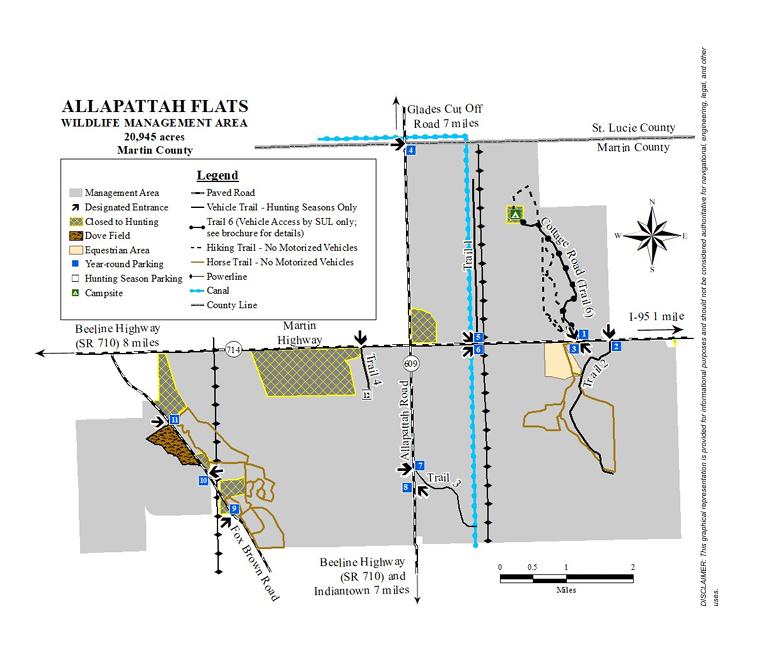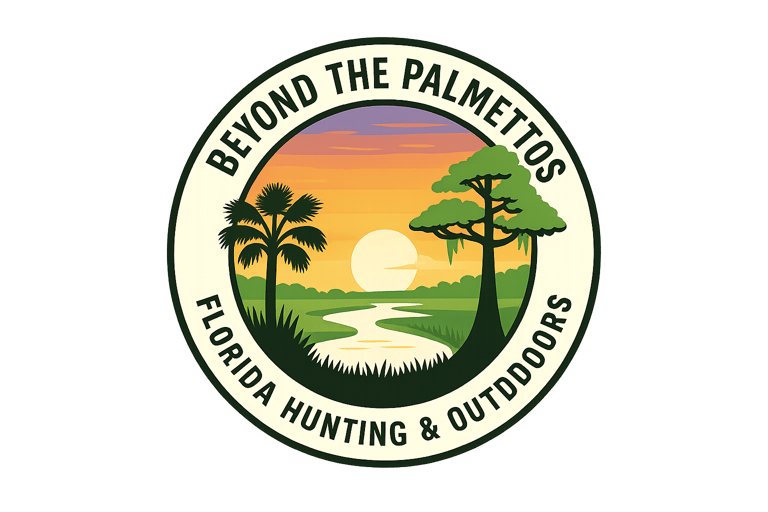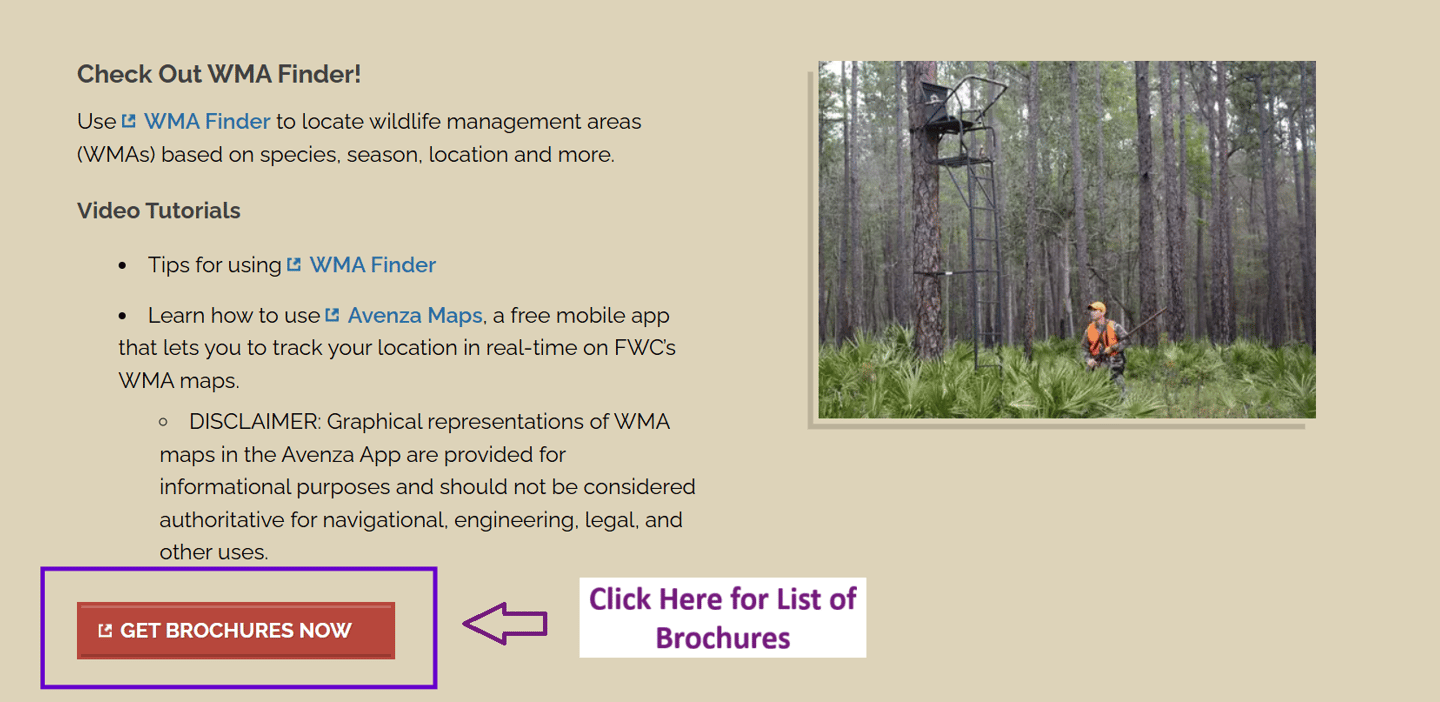How to Read a Florida WMA Brochure: Beginners Guide Part 1
Confused by Florida’s WMA brochures? This step-by-step beginner’s guide explains what they are, where to find them, and how to use them as your essential hunting tool. Start here to plan your next public land hunt the right way.
9/27/20254 min read
If you're new to hunting on Florida's public lands, the Wildlife Management Area (WMA) brochure might feel overwhelming at first glance. It's packed with rules, dates, maps, and regulations, but don't worry. Once you know how to read it, the brochure becomes your best friend for planning safe, legal, and successful hunts.
This post is the first in a short series where I'll walk you through each section of the WMA brochure. Today, we're starting with the basics: what it is, where to find it, and why it matters.
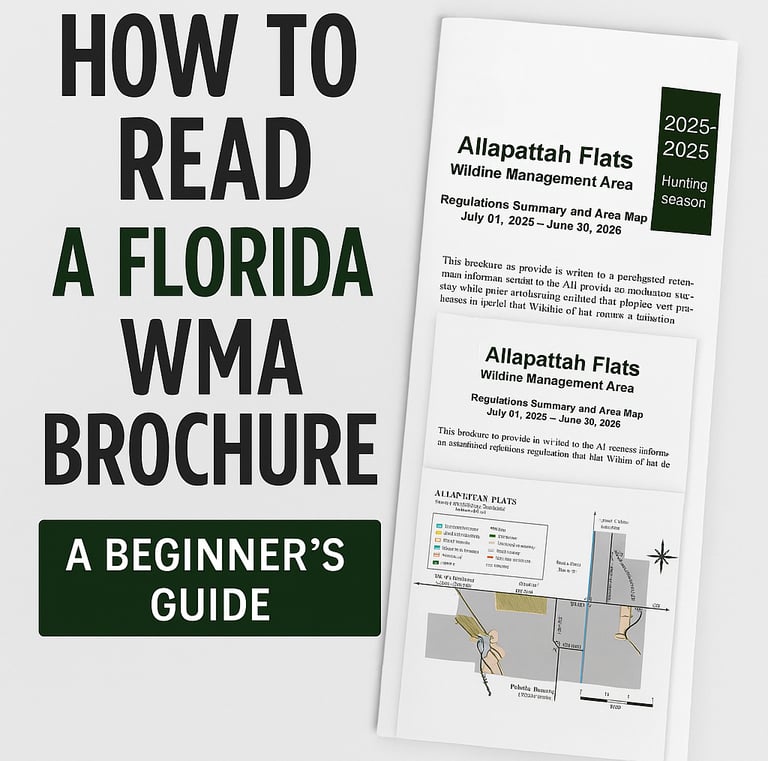

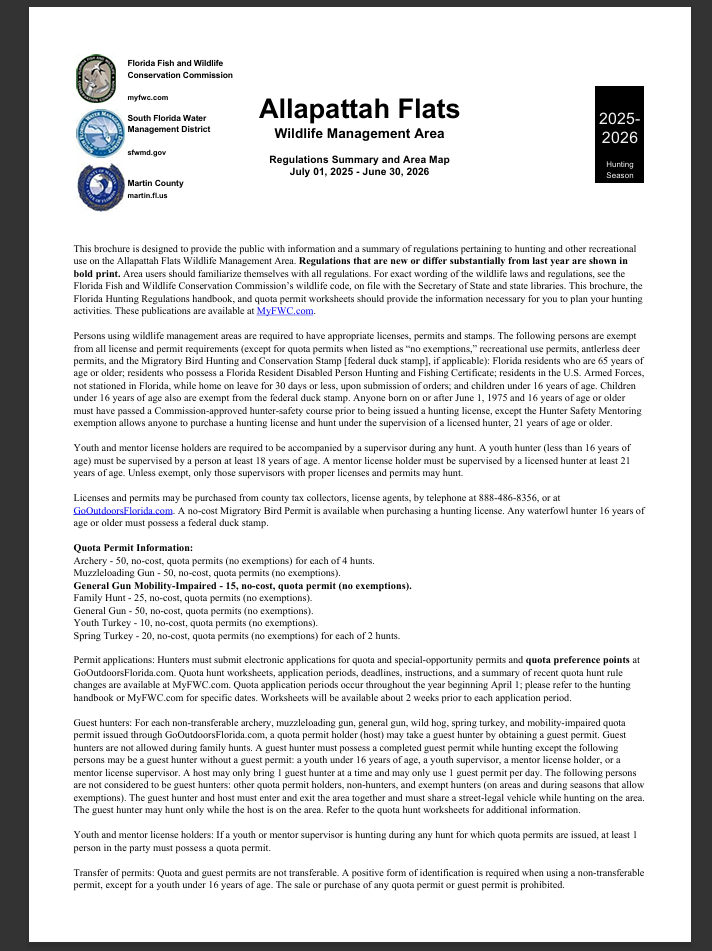

What is a WMA Brochure?
Think of the brochure as a rulebook and roadmap for each WMA. Florida has almost 200 WMAs and each area has its own unique regulations. The brochure is the official document that spells those out.
Inside, you'll find season dates and hunt types (archery, muzzleloading, general gun, small game, and more), bag limits and species-specific rules, weapons and hunting equipment rules, maps showing boundaries, access points, and campsites, plus area-specific regulations like camping, dogs, and vehicle use.
Understanding these differences is crucial because what's legal on one WMA might get you a citation on another. I've seen hunters get confused by assuming all WMAs operate under the same rules. They don't, which is exactly why these brochures exist.
Layout at a Glance
Most brochures follow a similar format, which makes them easier to navigate once you understand the pattern. The front page typically contains license and permit information, quota info, and general FWC rules. This is your at-a-glance reference for the most critical information.
The inside pages contain the meat of the document: rules, regulations, bag limits, and hunt details. This section can look dense, but it's organized logically. Usually, you'll see general regulations first, followed by Public Access, Hunting Equipment, Bag Limits, Hunt Dates, etc...
The map section shows boundaries, access roads, campsites, check stations, and parking areas. Don't underestimate the importance of these maps. They'll help you understand where you can and cannot hunt, where to park legally, and how to access different parts of the WMA. Quick Note: All of FWC's WMA maps are available for free on the Avenza app. You can use this map in the field (without service) and it will show you where you are on the map.
Once you know where to look for specific information, the whole document becomes much less intimidating. It's like learning to read a new language, and after a few brochures, you'll start recognizing the patterns.
Why It Matters
The brochure isn't just paperwork; it's the law. Failing to follow it can mean fines, revoked permits, or worse, the loss of hunting privileges. I've seen hunters lose their licenses for seemingly minor infractions that could have been avoided by simply reading the brochure.
Beyond legal compliance, the brochure is your go-to tool for staying safe in the field, understanding access and boundaries, planning your hunt efficiently, and respecting the land and wildlife. It tells you which roads are open to vehicle traffic, where you can camp, and what special restrictions might apply during your hunt dates.
The safety aspect cannot be overstated. Some WMAs have active military training exercises, or other activities that could pose risks to hunters. The brochure will alert you to these situations and help you plan accordingly.
Planning efficiency is another huge benefit. By studying the brochure ahead of time, you can identify the best access points for your intended hunting area, understand what gear you'll need, and determine when you can and cannot set up your hunting equipment prior to your hunt.
Finally, these regulations exist to protect Florida's wildlife resources and ensure sustainable hunting opportunities for future generations. When we follow the rules outlined in these brochures, we're participating in conservation efforts that have been decades in the making.
Building Your WMA Knowledge
Learning to read WMA brochures effectively is a skill that improves with practice. Each time you study a new brochure, you'll become more familiar with the format and better at quickly finding the information you need.
Start with the WMA you're most interested in hunting, but don't stop there. Even if you don't plan to hunt every WMA in Florida, reading through different brochures will give you a broader understanding of how the system works. You might discover new hunting opportunities you hadn't considered before.
Many experienced hunters keep a collection of brochures for their favorite WMAs, comparing regulations year to year and noting any changes. This practice helps them stay current and avoid surprises when regulations are updated.
Next Up in This Series
In the next post, we'll dig into season dates and regulations, arguably the most important section for hunters to master. We'll cover how to read the sometimes confusing date formats, bag limits, and avoid common mistakes that can ruin your hunt.
Until then, I challenge you to look up the brochure for your nearest WMA and skim through it. That's step one in becoming a confident and prepared WMA hunter.
Where to Find WMA Brochures
There are two main ways to get your brochure. The first and most popular method is online. Visit the FWC WMA Brochure Search Page (WMA Brochures | FWC) and look up the WMA either by name or by location. You can view it as a PDF, download it to your phone, or print a copy. This online version is updated regularly, so you're always getting the most current information.
The second option is printed copies. Some check stations and FWC offices may carry printed options, but the online version is always the most up to date. Printed versions can sometimes lag behind when regulations change mid-season.
Here's a pro tip that has saved me countless headaches: Save the PDF to your phone before heading into the woods. Cell service can be spotty on WMAs, but you'll always have the rules with you.
Some hunters prefer printing a physical copy to keep in their hunting pack. There's nothing wrong with this approach, especially if you like making notes directly on the document. Just make sure you're working with the current year's version
